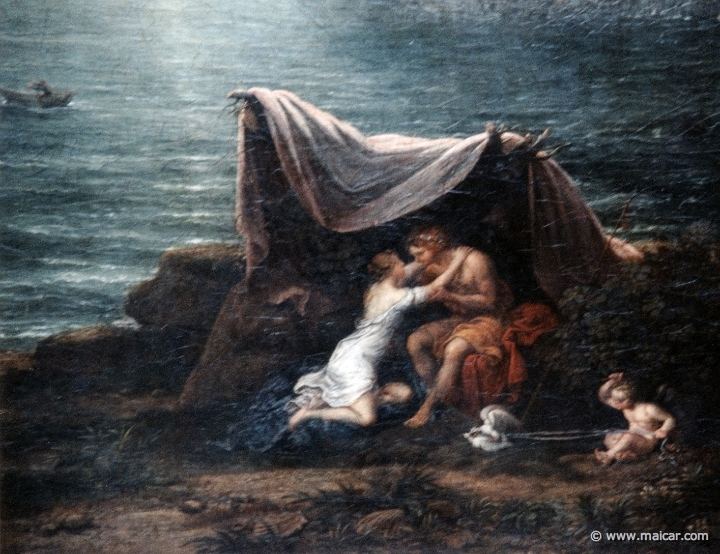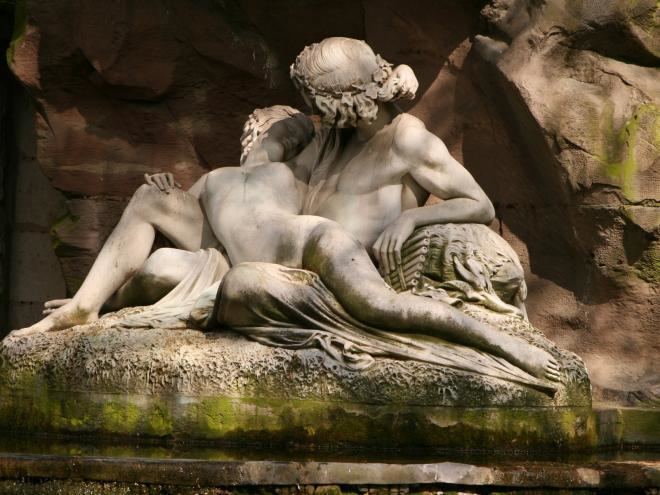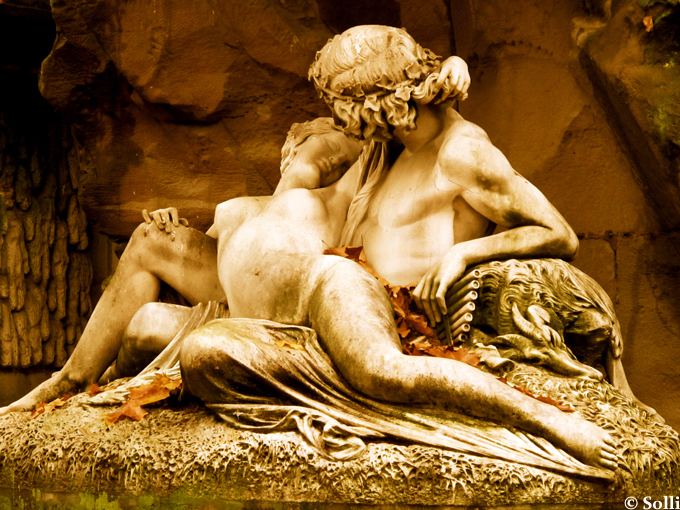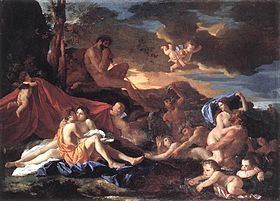 | ||
Similar Polyphemus, Doris, Nereid, Cephalus, Pygmalion | ||
The story of the love of Acis and the sea-nymph Galatea appears in Ovid's Metamorphoses. There the jealous Cyclops Polyphemus, who also loves Galatea, comes upon them embracing and crushes his rival with a boulder. His destructive passion comes to nothing when Galatea changes Acis into a river spirit as immortal as herself. The episode was made the subject of poems, operas, paintings and statues in the Renaissance and after.

A story of love and destructive jealousy

Galatea (Γαλάτεια; "she who is milk-white"), daughter of Nereus and Doris, was a sea-nymph anciently attested in the work of both Homer and Hesiod, where she is described as the fairest and most beloved of the 50 Nereids. In Ovid's Metamorphoses she appears as the beloved of Acis, the son of Faunus and the river-nymph Symaethis, daughter of the River Symaethus. When a jealous rival, the Sicilian Cyclops Polyphemus, killed him with a boulder, Galatea then turned his blood into the Sicilian River Acis, of which he became the spirit. This version of the tale occurs nowhere earlier and may be a fiction invented by Ovid, "suggested by the manner in which the little river springs forth from under a rock". According to Athenaeus, ca 200 CE, the story was first concocted by Philoxenus of Cythera as a political satire against the Sicilian tyrant Dionysius I of Syracuse, whose favourite concubine, Galatea, shared her name with the nymph. Others claim the story was invented to explain the presence of a shrine dedicated to Galatea on Mount Etna.



